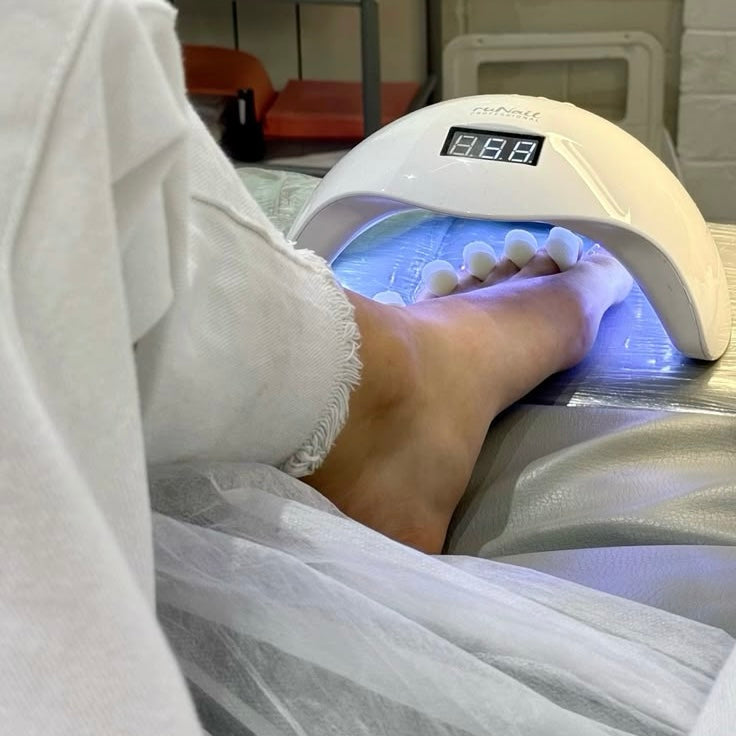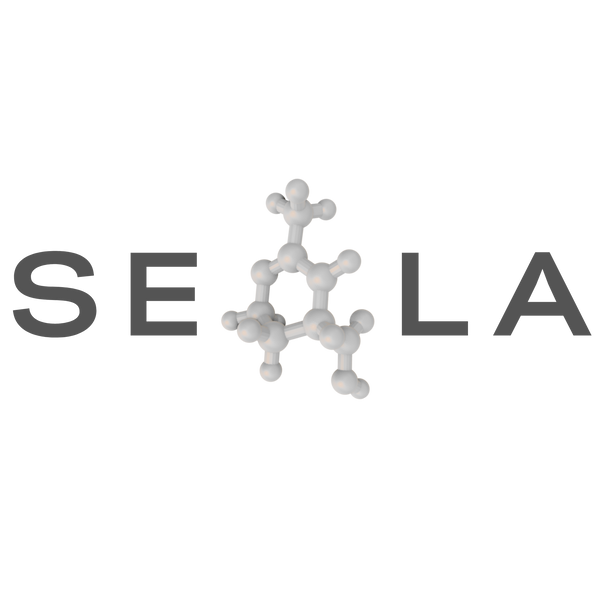
The "UV-free" Myth Busted; LED Lamps Emit UVA
In recent years, the nail industry has seen a rise in “UV-free” or “air-cure” gel polishes, often marketed as safer, healthier alternatives to traditional gel manicures. But how accurate are these claims? At SEALA, we believe in transparency and science-backed skincare and beauty solutions. Let’s dive deep into what “UV-free” really means, and why your nails might not be getting what you think.
Understanding How Gel Polish Cures
Traditional gel nail systems require photoinitiators, special compounds in the polish that react to UV or LED light. When exposed to the correct wavelength, these photoinitiators trigger a chemical reaction that hardens and locks the gel in place.
-
Traditional UV Lamps: Older fluorescent UV lamps emit a broad spectrum of UVA light. They cure gel in 2–3 minutes but can contribute to skin photoaging and DNA damage with repeated, unprotected exposure.
-
Modern LED Lamps: LED lamps are more efficient and emit light in a narrow UVA spectrum (typically 365–405 nm). They cure gel faster (30–60 seconds per layer) and are often labeled as “UV-free,” which is misleading.

The Myth of “UV-Free” Curing
Many brands advertise “UV-free gel polish” or “air-curing polish”, implying you can get the same gel manicure results without exposing your skin to UV light. Here’s what you need to know:
-
No gel polish cures without UVA or a photoinitiator reaction.
-
If a polish hardens like a gel, it is being activated by UVA light, whether from a traditional UV lamp or a narrowband LED lamp.
-
Claims of “UV-free” are usually referring to the absence of UVB/UVC, which are more harmful, but the polish still relies on UVA.
-
-
Hybrid or “air-cure” polishes aren’t true gels.
-
Many hybrid formulas marketed as “UV-free” are essentially enhanced traditional nail polishes.
-
They may dry faster, have a glossier finish, or last slightly longer than standard polish, but they don’t provide the long-lasting durability of true gel polish.
-
Expect chipping in a few days to a week, similar to regular polish.
-
-
LED lamps labeled “UV-free” are misleading.
-
These lamps are designed with narrowband LEDs that emit mostly UVA.
-
They are more energy-efficient and safer than older UV fluorescent lamps but still expose hands to UVA, which is why using protection like SEALA on hands is beneficial.
-

Why It Matters for Your Skin
Even narrowband UVA light from LED nail lamps can contribute to:
-
Oxidative stress in skin cells
-
Photoaging and pigmentation
-
Potential DNA damage over repeated exposures
While the exposure is small and localized to your hands, daily or weekly manicures without protection can add up over years. Products like SEALA provide a lightweight, antioxidant-rich layer that helps protect skin from UVA damage while keeping it hydrated — a perfect addition to your nail care routine.

Key Takeaways
-
No gel polish can cure without UVA exposure. “UV-free” is often a marketing term, not a scientific reality.
-
Air-curing or hybrid polishes are mostly enhanced traditional polishes and do not last like true gels.
-
LED lamps are safer than old UV lamps but still emit UVA.
-
Protect your hands from repeated UVA exposure using sunscreen or antioxidant-rich products like SEALA.
By understanding the science behind gel nails and LED curing, you can make informed choices for beautiful nails without compromising skin health.
SEALA Tip
Before your next manicure, apply SEALA UV Beauty on your hands. It provides targeted UV filtered protection and shields your skin from UVA damage, giving you confidence that your nail routine is safe and skin-friendly.
